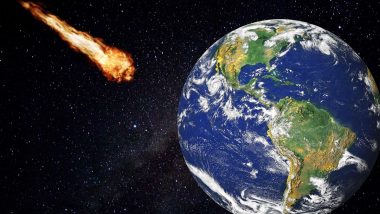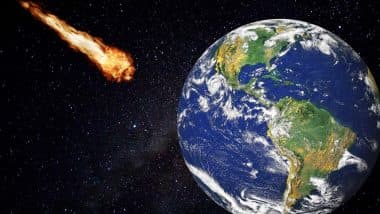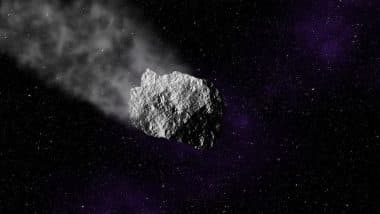Asteroids, the rocky remnants from the early solar system, often make close approaches to Earth, providing scientists with valuable opportunities to study these celestial objects. These rocky remnants from the early solar system offer both scientific opportunities and potential risks. While the majority of these asteroids pass at safe distances, continuous monitoring and analysis by organizations like NASA's Jet Propulsion Laboratory (JPL) are crucial. Understanding their trajectories and compositions not only aids in assessing any potential impact threats but also provides insights into the solar system's history and the formation of planets. According to the latest update from the JPL Asteroid Watch, we bring you the next five asteroid approaches to watch for.
1. Asteroid 2011 MW1 - July 25
Expected to make its closest approach on July 25, 2024, asteroid 2011 MWI measures 380 foot (116 metres) in diameter. The asteroid will pass a distance of about 3.86 million kilometres from Earth. The size of the asteroid is that of a high-rise building. NASA has confirmed that it will create a safe distance as it passes by. This flyby allows astronomers to observe and gather data on the asteroid's composition and trajectory.
2. Asteroid 2024 NVI - July 25
On July 25, 2024, asteroid 2024 NVI, with a diameter of around 100 foot (30 metres), will approach Earth at a distance of 5.39 million kilometres. Scientists have regarded the size of this asteroid as that of an aeroplane. This close approach will allow scientists to refine their understanding of the asteroid's orbit and characteristics. Observing such close encounters helps improve prediction models for future near-Earth objects (NEOs).
3. Asteroid 2024 MH1 - July 26
Asteroid 2024 MH1 will make its close approach on July 26, 2024. Measuring about 90 foot (27 metres) in diameter, it will pass at a safe distance of around 1.8 million kilometres from Earth, marking a size that of an aeroplane. Such observations are crucial for improving our knowledge of the diverse population of near-Earth asteroids and their potential impact hazards.
4. Asteroid 2011 AM24 - July 26
Scheduled for an approach on July 26, 2024, asteroid 2011 AM24 is estimated to be about 880 foot (268 metres) in size, like that of a stadium. It will pass approximately 6.45 million kilometres from Earth. This flyby is significant because it provides a relatively rare opportunity to study an asteroid of this size up close, which can yield insights into its structure and behaviour.
5. Asteroid 2024 NZ1
The final asteroid on the list, 2024 NZ1, is expected to pass Earth on July 28, 2024. With a diameter of approximately 180 feet (55 metres), it will come within 7.47 million kilometres of our planet. With the size of an aeroplane, its close approach will provide valuable data, helping refine the techniques used to track and analyze NEOs.
NASA's JPL Asteroid Watch program is critical in safeguarding our planet and advancing our understanding of the cosmos. The upcoming asteroid approaches in 2024 provide exciting opportunities for scientific research and public interest. By staying informed and supporting ongoing space research, we contribute to a better understanding of our place in the universe and the natural phenomena that surround us.
(The above story first appeared on LatestLY on Jul 25, 2024 05:22 PM IST. For more news and updates on politics, world, sports, entertainment and lifestyle, log on to our website latestly.com).













 Quickly
Quickly





















